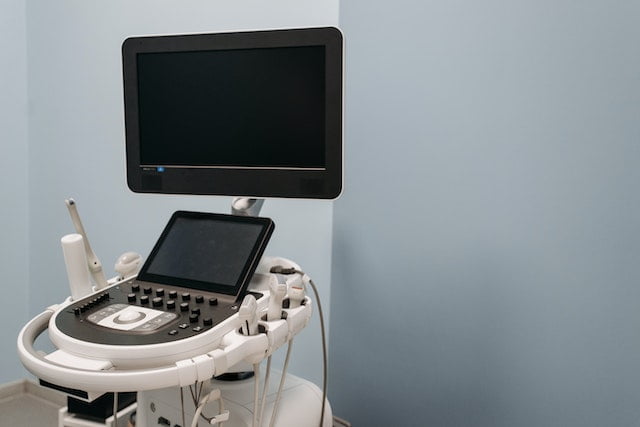Neural disorders are hard to treat as the parts of the brain responsible for them are difficult to access. In most cases, surgical treatments are recommended which take a longer duration to conduct followed by a time-taking recovery. Therefore, the surgeons want to move towards easier treatment options that take less time, less budget, and are also patient-friendly in terms of being less painful. One such method is the use of ultrasound waves for the treatment of essential tremors. In this article, let us explore what this neuronal disorder is and understand the efficacy of ultrasound treatment for essential tremor.
What is an essential tremor?
Essential tremor, abbreviated as ET, is a disease state affecting the nerves which results in the shaking of upper body parts involving the head, tongue, chin, larynx, hands, and arms. The condition is caused due to the abnormally high electrical activity in the thalamus, a neural structure buried deep into the brain which is responsible for coordinating muscular activity. Usually, these tremors are not life-threatening and do not affect a person’s day-to-day activities. However, these may become severe at a point in life and result in disability.

A physician diagnosing essential tremor based on brain scans
Symptoms of essential tremor
A person who is having essential tremors may experience the following symptoms:
- Uncontrollable shaking of different body parts
- Nodding head
- Shaking voice
- Balance problems
Tremors associated with this condition usually worsen:
- During emotional stress and psychological trauma
- During intentional movements
What is ultrasound treatment for essential tremor?
The employment of ultrasound waves for the treatment of essential tremors is a method of specifically targeting the tissue of the brain responsible for the initiation of these tremors. Being paired with an MRI technique known as diffusion tensor imaging, the process becomes highly focused and generates high-intensity ultrasound waves which only affect the area under focus thus reducing the chances of any collateral damage. Due to its ability to reduce essential tremors by up to 70%, the process has been approved by the FDA.
Working principle of ultrasound treatment

An ultrasound machine
To conduct an ultrasound treatment, a minute patch of the thalamus responsible for the initiation of essential tremor is bombarded with a focused beam of sound energy. This energy heats up the tissue followed by its deterioration. The process is painless and does not even require the patient to be anesthetized.
How an ultrasound treatment is performed?
For an ultrasound process, the given steps are followed:
- As ultrasound waves cannot penetrate hairy skin very well, one needs to shave her or his head before the procedure.
- Followed by shaving, four spots on the patient’s scalp are identified to which a custom frame is attached in order to keep the head from moving during the process.
- After this, the patient is made to lie down on the MRI bed, and sensors are attached to the brain.
- As soon as the MRI scanner starts working, the physician opts for a target area in the patient’s brain. If you feel tingling in your hands, let your doctor know about it.
- Once the target spot has been identified, the treatment is started which will take some time to complete.
- After the treatment, the physician usually keeps the patient under observation for an hour. Some patients may also feel a tingling sensation, headaches, or instability which may last even after a few weeks of treatment.
- Usually, these issues should get automatically resolved after 3 to 4 weeks. If not, it is advised to contact your healthcare provider.

Headache followed by an ultrasound treatment
Advantages of ultrasound treatment
The treatment of tremors using ultrasound waves has the following advantages:
- With the employment of ultrasound waves as a therapeutic means for tremors, the need for surgery is eliminated along with its associated risks such as bleeding, infections, and increased chances of stroke.
- With the elimination of the need for surgery, cutting or drilling the skull to reach the thalamus is not required. Thus the process is completely painless.
- The ultrasound procedure is shorter and simpler as compared to surgery which requires more time to conduct followed by a longer hospital stay.
- Ultrasound treatment is a well-tolerated procedure particularly helpful for patients who have lesser physical strength and cannot undergo surgery without being at high risk.
Who should go for an ultrasound treatment for essential tremors?
A patient is eligible for ultrasound treatment if:
- There is a confirmed diagnosis regarding essential tremors
- The severity of tremors is increasing
- The prescribed medications (i.e. primidone, propranolol, etc.) have proven to be ineffective in dealing with the situation
- The attending physician considers surgical treatment unnecessary or too complicated
Who should avoid taking ultrasound treatment for essential tremors?
Although the treatment of essential tremors may sound safe with the ultrasound technique, the method is not suitable for everyone. The following individuals should avoid ultrasound treatment or do as recommended by their physician:
- Subjects who have a pacemaker or any other implanted device
- Individuals with existing kidney diseases
- People who cannot undergo an MRI
- Individuals who have claustrophobia or anxiety about the process
Conclusion
Convulsions, seizures, as well as tremors pose mild to severe effects on human health. One such issue is the incidence of essential tremor which is a condition affecting upper body parts. Due to its negative impact on the patient’s quality of life, physicians and scientists have kept the issue under special focus. In this regard, treatment of essential tremors with the help of ultrasound waves has become common. The method has proven to be efficacious and convenient owing to its ease of conduction and cost-effectiveness.

PhD Scholar (Pharmaceutics), MPhil (Pharmaceutics), Pharm D, B. Sc.
Uzma Zafar is a dedicated and highly motivated pharmaceutical professional currently pursuing her PhD in Pharmaceutics at the Punjab University College of Pharmacy, University of the Punjab. With a comprehensive academic and research background, Uzma has consistently excelled in her studies, securing first division throughout her educational journey.
Uzma’s passion for the pharmaceutical field is evident from her active engagement during her Doctor of Pharmacy (Pharm.D) program, where she not only mastered industrial techniques and clinical case studies but also delved into marketing strategies and management skills.

















